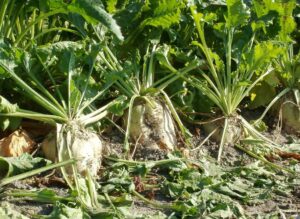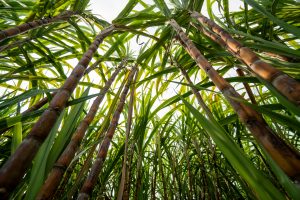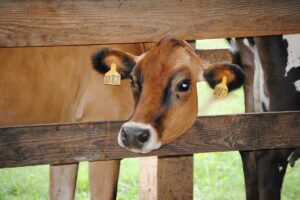Maria Villagrasa & Fernando Diaz
In areas where pasture is the main type of food, the low efficiency in nitrogen use causes its excess to be excreted and accumulated in the waterways and groundwater. To avoid this, crops with lower N concentrations in their dry matter (DM) compared to pasture have been sought; one such crop is forage beets (Beta vulgaris).
Forage beet is a biennial plant that can grow at temperatures between 8-25oC and is tolerant to drought as well as frost. It produces underground tubers that are shaped like a rounded cylinder and are easily harvested. It has a relatively low DM content (between 12% and 20%) as well as protein (about 6-10% DM basis), calcium and phosphorus. The neutral detergent fiber is 42.0% DM basis, and the acid detergent fiber 22.7%, DM basis. Forage beets can result in a feedstuff of high nutritional and digestible value also highly palatable to dairy cattle.
There is not much information about the effects of beets when used as fresh fodder supplement. Due to their high content of non-fibrous carbohydrates (55 to 70% DM basis), there is a risk that cows could develop ruminal acidosis when fed beets, even if animals are used to such feedstuff.
Research was carried out (D. Pacheco et al., 2020) to document aspects of rumen function in cows fed various concentrations of beets as part of their diet, and to understand its impact on rumen digestion and any potential risks associated with their intake.
This experiment used 16 rumen-cannulated cows at the end of their lactation. Cows were fed ryegrass grass alone or supplemented with beets twice daily. The ryegrass was cut before each feeding and the beets were removed by hand each morning, the beet tops were removed (and preserved) and the bulbs were chopped into pieces with a machete to a size the cows could eat (15% leaves and 85% bulb, DM basis).
During the first three days, two cows receiving the most beets developed clinical acidosis and were removed from the trial; the groups were then left as follows:
- 100% (DM) ryegrass (control)
- 80% (DM) ryegrass with approximately 23% (DM) beets (23BEET)
- 60% (DM) ryegrass with approximately 45% (DM) beets (45BEET)
Measurements included rumen pH, short-chain volatile fatty acids (VFA) and rumen ammonia concentrations (determined at 2-hour intervals), as well as daily individual intake, microbial growth estimates and rumen dynamics.
Forage beets had no effect on DM intake or milk production
The inclusion of 23 and 45% beets in the diet did not affect daily DM intake (14.6 kg/d), milk production (10.7 kg/d), microbial nitrogen synthesis (129 g N/d) or digesta flow (0.16/h; 11.2 L/h) of cows in lactation.
As beet intake increased, the mean concentration of ammonia in rumen was reduced from 4.4 mmol in the control treatment to virtually undetectable (0.71 mmol) in the 45BEET treatment cows. However, despite these low concentrations, microbial growth was adequate.
The inclusion of beets did not affect molar concentrations of total short-chain VFA in the ruminal liquid, but increasing the amount of beets decreased the ratio of acetate (from 0.69 in control to 0.58 nmol/l in 45BEET), and increased butyrate ratio (from 0.10 in control to 0.17 nmol/l in 45BEET).
The size of the rumen digesta particles was also affected by the type of diet; the inclusion the 45BEET diet produced a substantially higher number of large particles (> 2 mm) compared to ryegrass feeding (32.5 vs. 19.6 g/100g respectively). Variations in the degree of degradation of the beets may affect the fermentation rate and the incidence of acidosis.
Replacing ryegrass pastures with forage beets had no effect on DM intake or milk production. Judging by these results, it is recommended that when fed with ryegrass, fresh beets should not exceed approximately 40% of DM intake because higher intakes could likely result in acidosis in cows at the end of the lactation.
Reference
D. Pacheco, S. Muetzel, S. Lewis, D. Dalley, M. Bryant and G. C. Waghorn. Rumen digesta and products of fermentation in cows fed varying proportions of fodder beet (Beta vulgaris) with fresh pasture or silage or straw. Animal Production Science, 2020, 60, 524–534.
© 2020 Dairy Knowledge Center. All Rights Reserved.








